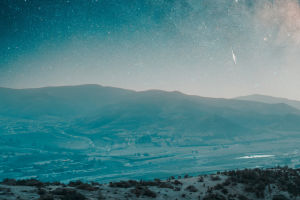Featuring some of the country’s most dramatic scenery, Grand Teton National Park includes spectacular snowcapped peaks, their profiles reflected in fjord-like lakes and a slowly flowing river. No matter what the season, the park presents an array of sights, smells, sounds, and outdoor activities.
Without much warning, the Grand Tetons rise 7,000 feet almost straight up from the Jackson Hole Valley. The range's serrated granite peaks are so perfectly proportioned they seem born of a landscape artist's imagination rather than Mother Nature. Named by French-speaking trappers who ventured through the region in the early 19th century, they are the youngest mountains in the Rockies and certainly the most handsome, their gorgeous facades mirrored in six lakes and sinuous Snake River along their eastern edge.
Over millions of years, earthquakes shook the land, causing blocks of land on both sides of the fault to slip past each other. The west block of land rose upward to form the mountains while the east block of land dropped down to form the valley called Jackson Hole. The Tetons are the youngest range in the Rocky Mountains and some of the youngest mountains in the world.
Grand Teton National Park was established in 1929 and then again in 1950. In 1929, President Calvin Coolidge went against enormous public opposition and approved the original 96,000-acre park, which encompassed the Teton Range and six glacial lakes. In 1943, President Franklin D. Roosevelt established the 210,000-acre Jackson Hole National Monument to protect the remaining federal lands on the valley floor. In 1950, President Harry S. Truman and Congress merged the monument, the national park and a 35,000-acre donation from John D. Rockefeller to create the 310,000-acre Grand Teton National Park we visit today.
U.S. Highway 89 runs the length of the park between the town of Jackson Hole, Wyoming, and Yellowstone’s southernmost entrance. Along the way are numerous pull-outs with views of the peaks beyond the Snake River and Jackson Lake.
The best time to visit Grand Teton National Park is from mid-May to late September when all the visitor centers, hiking trails and other park activities, including kayaking and fishing, are open and accessible. Beginning in October, winter blows through the park, shutting down most of its facilities and roads. Still, winter is a prime time for cross-country skiing and snowshoeing.
A trip to Grand Teton National Park can be a wonderful experience for visitors of all ages, but it's important to take certain safety precautions. For instance, hiking is one of the main activities at the park, but hikers should always traverse the trails in pairs or groups. Hiking alone is not recommended. As for gear, hikers should come prepared with adequate footwear, drinking water and extra clothing. Ice picks, crampons and traction devices aren't a bad idea either, depending on the conditions of the trails.
This park shelters a large population of black bears and grizzly bears, so it's likely that you might encounter a bear or two. Visit the bear safety section of the park website to learn the safety basics, such as how to store your food and use bear spray. Rangers ask that visitors report any bear sightings at either a visitor center or a ranger station.


